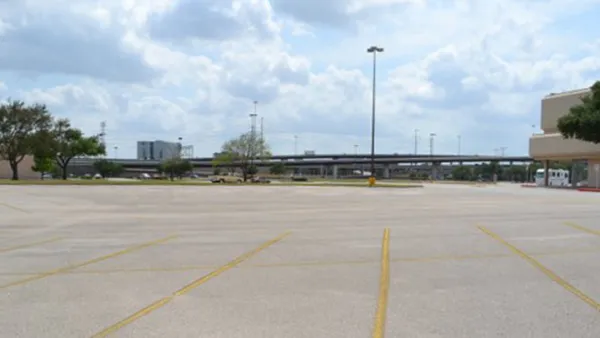Cities around the world are finding ways to go on a parking diet, freeing up unused space. San Francisco and Philadelphia are two U.S. leaders, while cities like Paris, Copenhagen, and Zurich pursue even more aggressive measures.

Though it's necessary in cities designed around the car, the way most cities provide for parking is hardly efficient. "'As parking regulations were put into zoning codes, most of the downtowns in many cities were just completely decimated,' says Michael Kodransky, global research manager for the Institute of Transportation and Development Policy. “What the cities got, in effect, was great parking. But nobody goes to a city because it has great parking.'"
The first step toward addressing the problem is simply measuring it. From Nate Berg's article: "Knowing the parking inventory has made it easier for the city to pursue public space improvements such as adding bike lanes or parklets, using the data to quell inevitable neighbourhood concerns about parking loss."
Invoking UCLA parking guru Donald Shoup, Berg writes, "After San Francisco implemented a pilot project with real-time data on parking availability and dynamic pricing for spaces, an evaluation found that the amount of time people spent looking for parking fell by 43%." Philadelphia's efforts to inventory parking have also led to space gains.
Outside the U.S., many cities have undertaken more aggressive strategies. "In 1996, [Zurich, Switzerland] decreed that there would be no more parking: officials placed a cap on the amount of parking spaces that would exist there, putting in place a trading system by which any developer proposing new parking spaces would be required to remove that many parking spaces from the city's streets."
Since 2003, Paris eliminated roughly 15,000 above-ground parking spaces. "São Paulo, for instance, got rid of its minimum parking requirements and implemented a maximum that could be built into specific projects. Beijing, Shenzhen and Guangzhou are hoping to emulate San Francisco's dynamic pricing approach."
FULL STORY: Lots to lose: how cities around the world are eliminating car parks

National Parks Layoffs Will Cause Communities to Lose Billions
Thousands of essential park workers were laid off this week, just before the busy spring break season.

Retro-silient?: America’s First “Eco-burb,” The Woodlands Turns 50
A master-planned community north of Houston offers lessons on green infrastructure and resilient design, but falls short of its founder’s lofty affordability and walkability goals.

Delivering for America Plan Will Downgrade Mail Service in at Least 49.5 Percent of Zip Codes
Republican and Democrat lawmakers criticize the plan for its disproportionate negative impact on rural communities.

Test News Post 1
This is a summary

Test News Headline 46
Test for the image on the front page.

Balancing Bombs and Butterflies: How the National Guard Protects a Rare Species
The National Guard at Fort Indiantown Gap uses GIS technology and land management strategies to balance military training with conservation efforts, ensuring the survival of the rare eastern regal fritillary butterfly.
Urban Design for Planners 1: Software Tools
This six-course series explores essential urban design concepts using open source software and equips planners with the tools they need to participate fully in the urban design process.
Planning for Universal Design
Learn the tools for implementing Universal Design in planning regulations.
EMC Planning Group, Inc.
Planetizen
Planetizen
Mpact (formerly Rail~Volution)
Great Falls Development Authority, Inc.
HUDs Office of Policy Development and Research
NYU Wagner Graduate School of Public Service





























